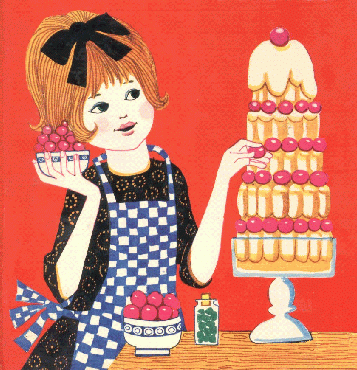
In the very beginning the best is to learn speak and understand by listening, please get some movies, songs, listen to radio and talk to friends in Hebrew this will make you confident to go in the next natural step: read and write. Really you should listen and speak before, and of course do it with your children.
Hebrew is easier than English or Spanish in that its alphabet has only 22 letters, with no distinction between upper and lower case; whereas English has 52 different letters to learn. Hebrew's 22 are as many as the cherries in this dessert. The ones that are in the dessert!

Not many really. And may be easier to learn with this...
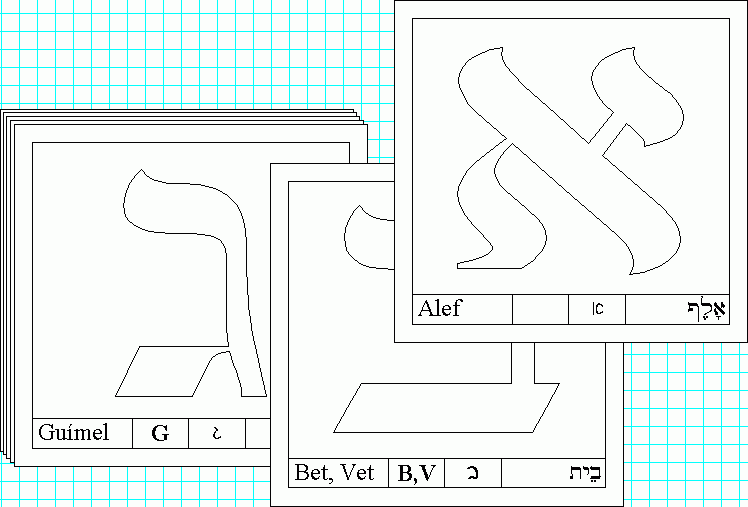
The cards display, up and very large the Hebrew letter, Down to the right and left its name in Hebrew and English, in the middle, the approximate equivalent letter or sound, and the script.
Below the indications there are 7 images with 6 letters each one, which is recommended to print the same size in a full sheet of paper each; to paint cut and learn the alphabet.
Cards are not required to learn the 5 final letters neither the points, but they are there. Don't use them if you don't want.
Print each image the same size, better in a full sheet of paper each. Apparently they are a little larger than a letter page so you may need to adjust size. Anyway this is already done: You may download Letters.doc in Microsoft© Word® format this contains the 7 images and summary ready to print or if you prefer the file: Letters.pdf in PDF format.
Afterwards may wish to paint them in desired variegated colors keeping in mind its approximate sound. It will help you to approximate the pronunciation of text more quickly.
They can be grouped each 6 letters, learn them and then review.
You may slide up any letter, and before seeing its approximate equivalent one in English to recall...
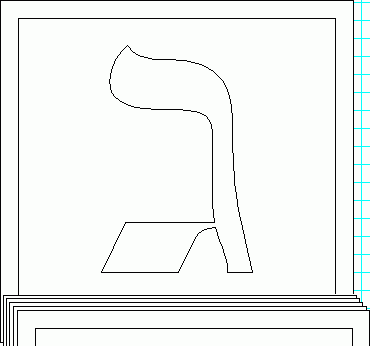
If you didn't recall, slide it all, review and reattempt...
Also may want to slide downwards and recall the Hebrew Letter.

After you know their sounds, you may learn their names. Do not stop trying, anyway is amusing to paint and cut.
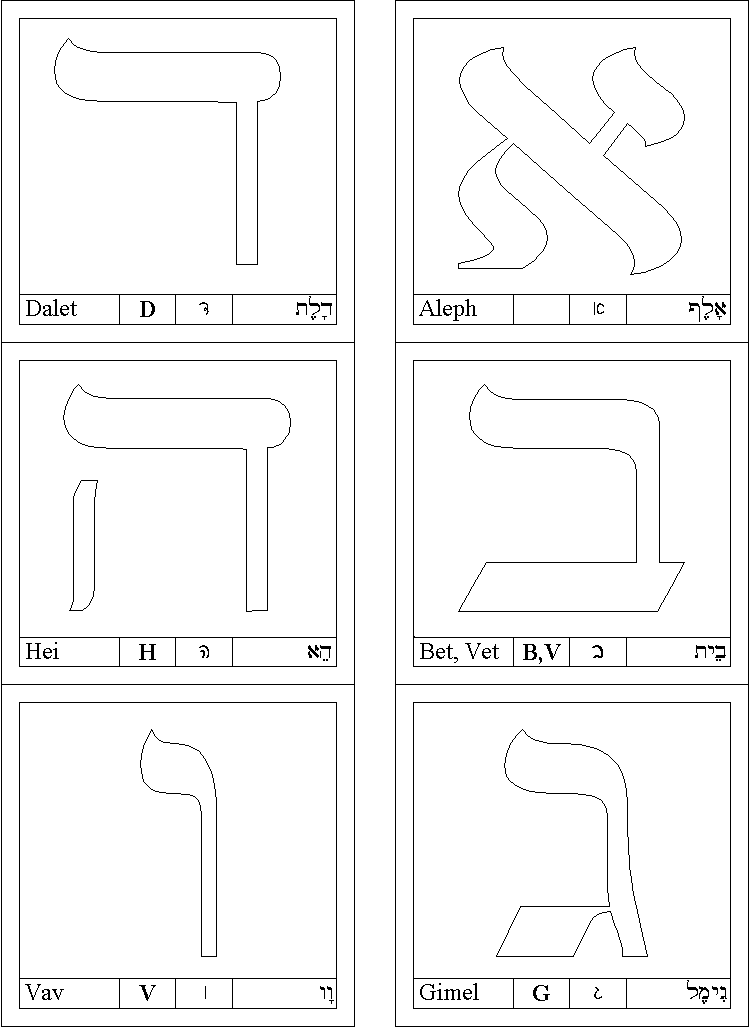
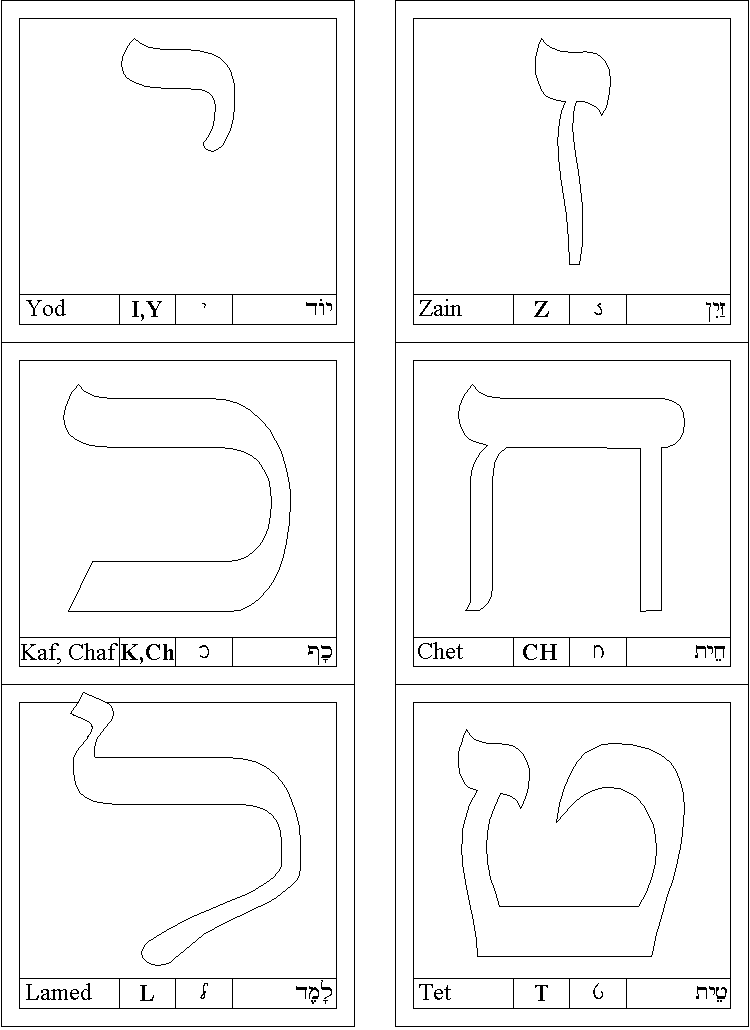
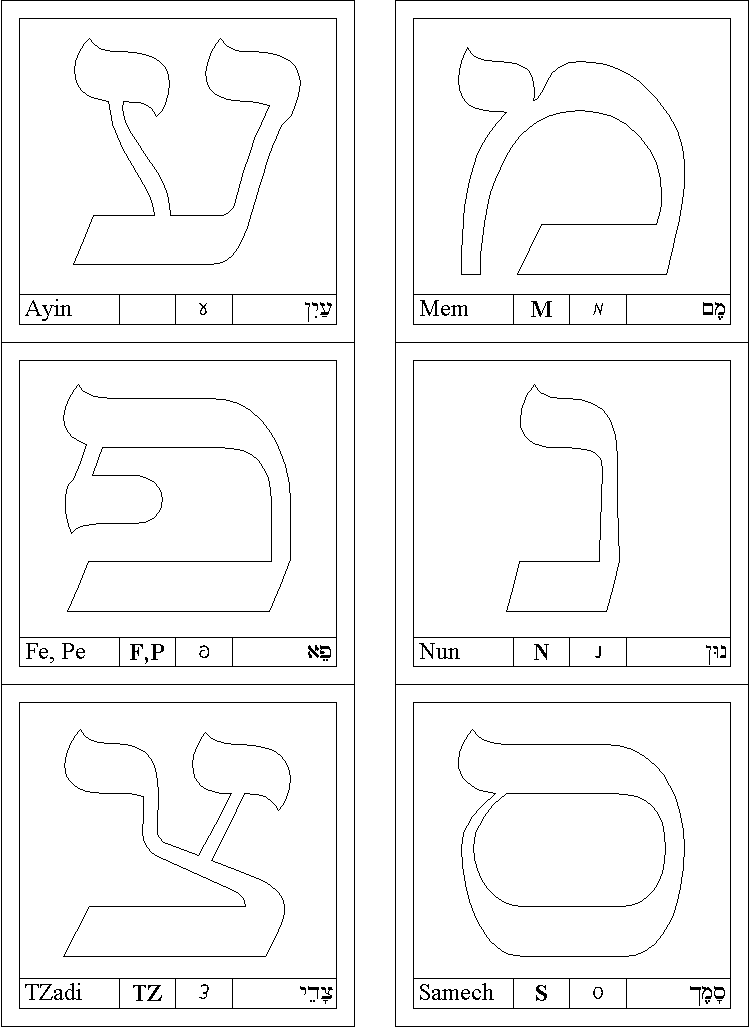
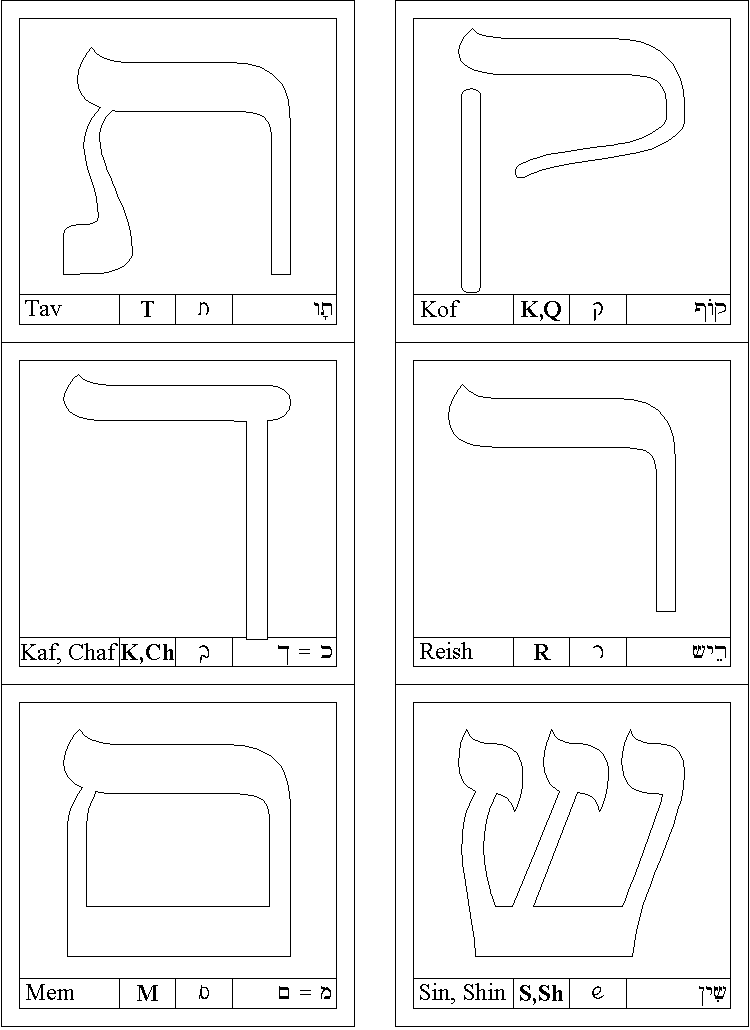
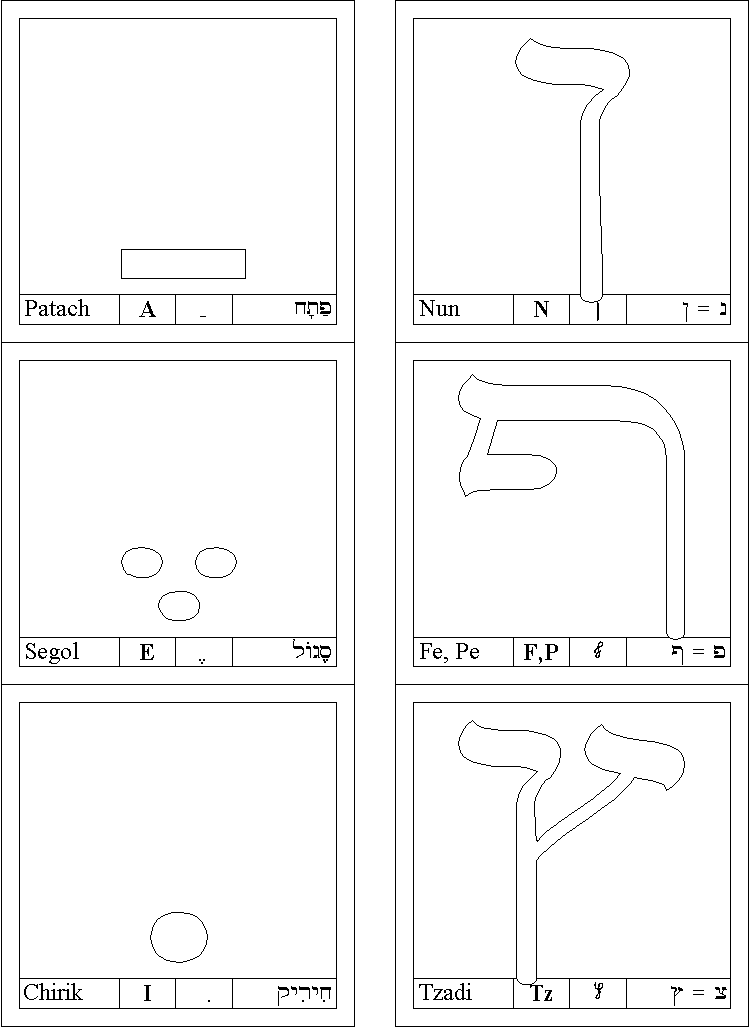
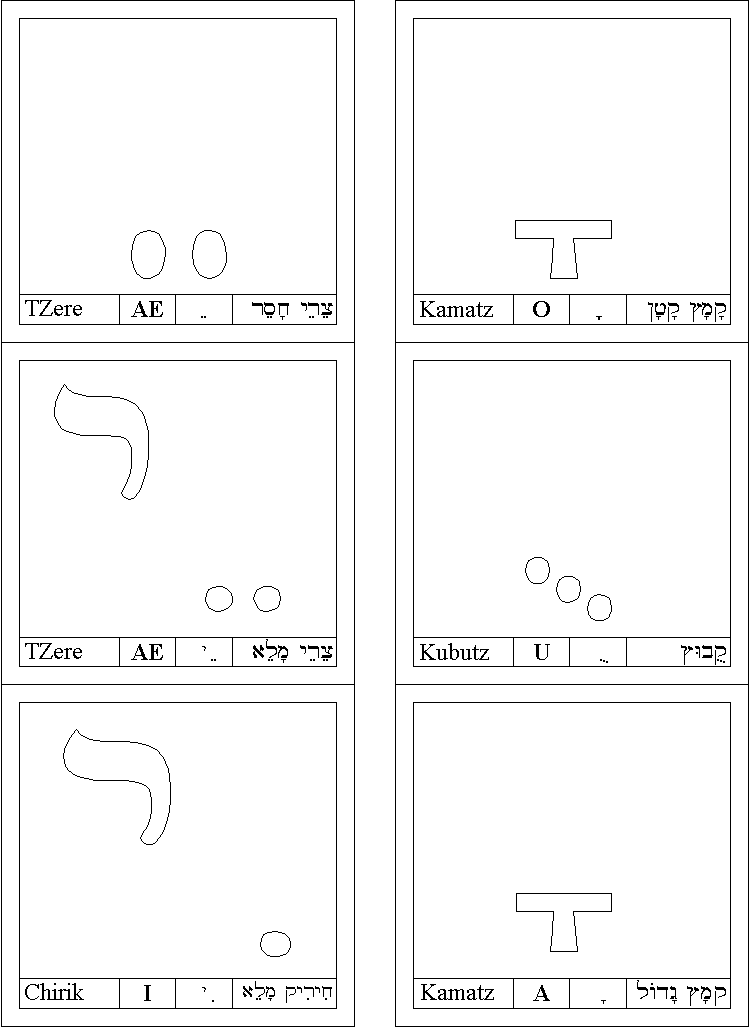
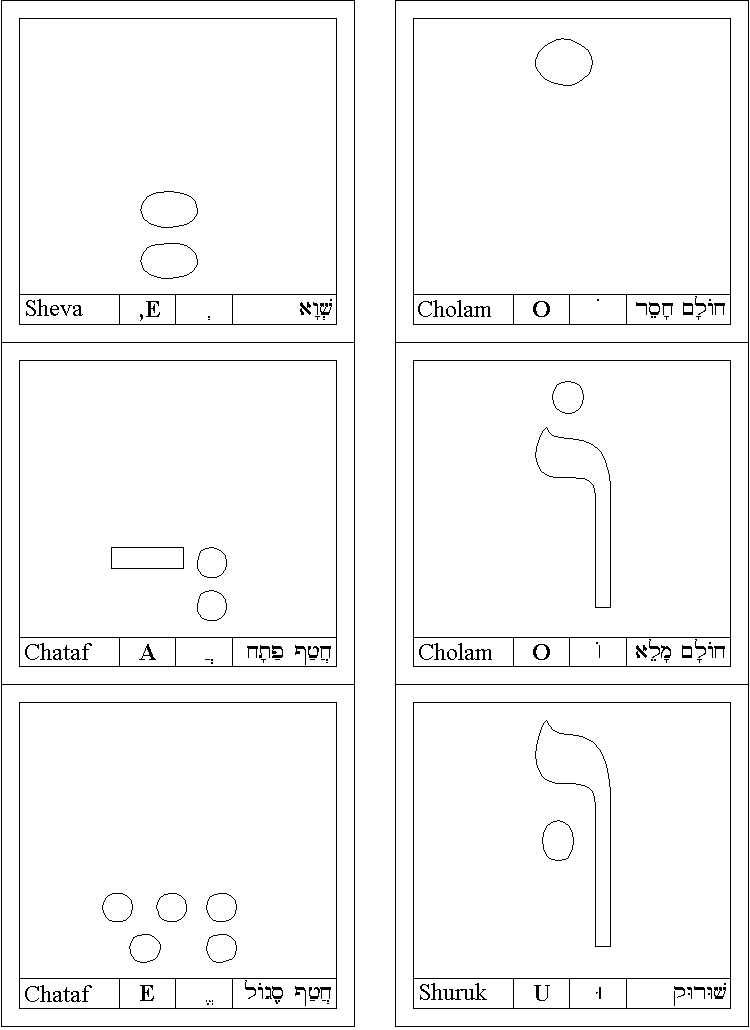
Dividing the 22 letters in 4 or 6 according to children ages, try first frequent use, and continuant letters, those that can be pronounced continuously or they sound is typical of some animals or very common things known by children. Like M S R G. In next opportunities try to cover the complete alphabet.
Cut and give to the children only those four or six letters so they paint them if they are more children can give to them more letters. They should see them in the correct position, the information that appears down in the card "is the floor", and that side is down.
While we paint each letter we repeat its sound. Each kid paints a different letter and knows very well how it sounds or is pronounced.
Get a truck or box or any other toy. Put inside all the just painted letters. Don't flip them upside down. What continues is something like as an auction. The players generally will recall the sound of the letter they painted, and this way they will request for it
We shall remove a letter of the truck or box, show it to the children and wait someone to request for it: Humming or doing its sound. If they request an M will make a cow sound, MMMM, a R, like a car or angry doggie, The S as a deflating balloon... ALWAYS THE SOUND.
The player who done it well will receive the letter. And we will continue thus until finishing all the just painted ones.
Here is possible that some competitors finish with more letters than others. We will request the cards back, we pretend whose got less cards put more attention.
This activity is alike READ since we see the letter and recall the sound.
Please don't let those didn't win feel badly.
It is very important to observe in each child by indications of boredom or frustration, to be this case, give to who less success had all your attention, to obtain at least a satisfaction. Due to the tense this game can become, is necessary to take care of this which is not an insignificant detail. Frustration would reinforce itself.
It is important here to BE SENSITIVE. We do not know if the kid that now is not doing it very well will be a SOFER STAM when grown.
We will give children, to each one the letter he or she painted, if is it the first time, and changing if is the second or more.
Then the truck will come, empty to collect letters. The guide will pronounce its sound. And it will receive only from whom give her or him the correct one and will continue collecting all the letters that are in game. Varying the order to keep their attention and do it amusing.
This activity is related to WRITING since they listen to a sound and select a letter.
It is necessary to have learned a little bit of the letters before beginning the contest; knowing there is coming a competence the children will put more attention, and there are studies that show that stress helps to record learning in long-term memory. And this stress is the anxiety to win the game. Please Read again the section to do not allow who didn't win feel badly.
When we want them to read we don't spend time teaching the names of the letters. In fact neither mention them for distract not, our priority should be fun, and success that would feel a child by really read repeating the sounds of each letter like the notes of a song making words. In this case the information that appears down in the Card, only serves to realize that side is down.
When the children begin to get bored of playing, can pass since the second games; Change to another game that nothing have to do with reading. READING SHOULD BE FUN, NEVER A PUNISHMENT.
Peek any word in a Siddur, book, or Israeli newspaper arrange the sliding cards on the table just like the letters in the word look like. Then watch the transliteration or its sound. With more practice, the cards won't be required anymore. It is convenient a Siddur with transliteration to verify.
When already are known all the letters sounds. Select a theme for instance: colors, stuff found in a kitchen, etc. Make two teams at least two people each. Then somebody is sent to listen very silent from the contrary team one of those nouns.
Then he or she gets back to their team, writes in a paper or board without saying anything in Hebrew letters that noun. The rest of the team pronounces it. They who do it right the most times win.
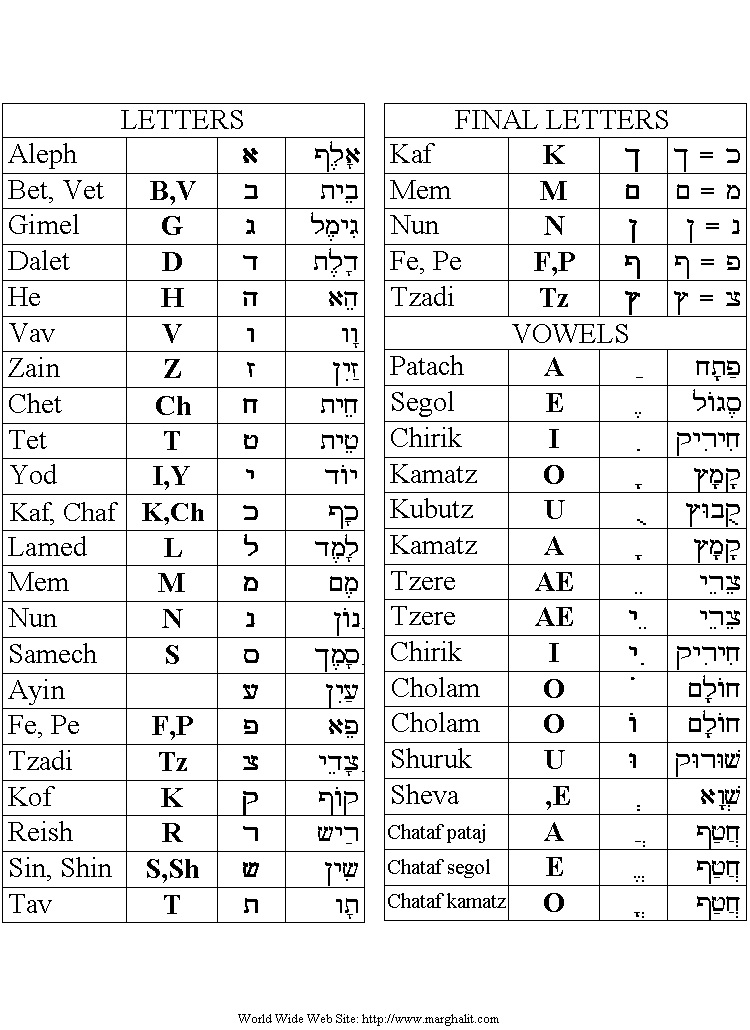
Please don't forget you are learning a different language the fact that some sounds in your native language are a little alike those of this new one does not mean you don't have to effort to learn the very right way to make absolutely new sounds in order to be understood and not give another people a hard time trying to understand you.
Back